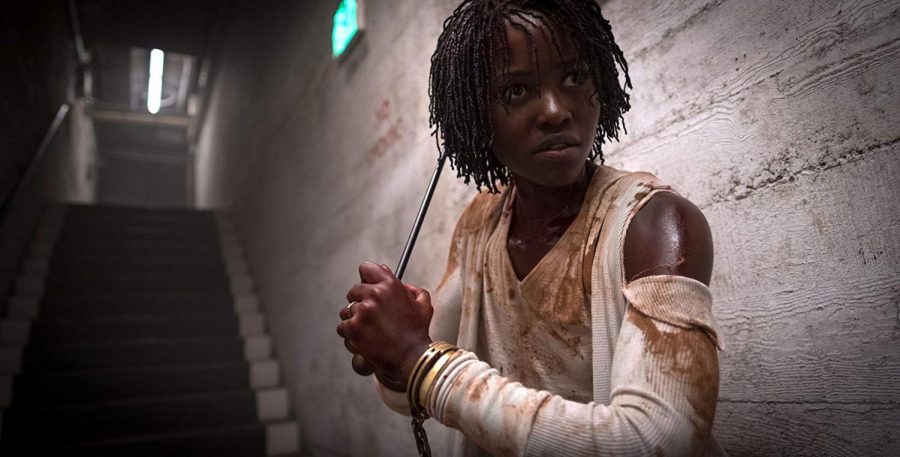REVIEW: ‘Us’ shocks, then inspires reflections
May 28, 2019
In March, Jordan Peele’s much anticipated second horror movie, “Us,” arrived in theaters. As a fan of Peele’s debut feature “Get Out,” I had high expectations which were not only met, but surpassed. “Us” represents everything the modern horror genre is missing, from complex themes and character to effective development of suspense.
The movie begins with a young girl, Adelaide, who is visiting the Santa Cruz beach with her parents. She wanders off into a house of mirrors, where she faces another girl who is identical to her, a doppleganger. “Us” then cuts far to the future, where the now Adelaide Wilson and her husband, Abraham, are introducing their two children, Zora and Jason, to Adelaide’s childhood Santa Cruz summer house. From the beginning of the trip, Adelaide is haunted by echoes of her childhood trauma caused by her encounter with the girl in the mirror house, and she is convinced that something bad will occur. Later that night, Adelaide’s worst fears come to fruition, when the Wilsons are confronted by four masked individuals. When these strangers attack, it is revealed they share the same faces as the Wilsons, and are determined to replace them.
The complexity in both the messages and incredible storytelling elevate “Us” from a forgettable horror movie to something groundbreaking and unexpected.
Even after repeated viewings, it is difficult to discern Jordan Peele’s intended message behind “Us.” I interpreted the movie as a critique of the American Dream. Peele devotes a significant portion of the film comparing the Wilsons’ possessions to those of their friends, the Tyler’s. Ultimately when the murderous dopplegangers, the Tethered, emerge, the Tyler’s luxury boat, modern car, and beautiful house offer no help against their malicious doubles. By evaluating the failure of the cynical, materialistic American Dream, which now represents the need to have more and more of the best things, Peele help shows that the promise of the “Us” is superficial and hollow.
Another incredibly strong element of “Us” is the compelling plot and rich storyline. One of the most memorable aspects of Peele’s movies is the complex plot and unpredictable endings. He effectively ties in seemingly random and important details such as the fact that “there are thousands of miles of tunnels beneath the continental US” or the rabbit cages in the opening credits into the larger plot. The ability to create such an intricate and fluid storyline really plays in the film’s favor. One of the most memorable scenes from “Us” is a confrontation between Adelaide and her Tethered, Red. During the faceoff, the screen flashes through the one memorable event, a ballet performance, from the perspective of both women. By evaluating this shared watershed moment in Adelaide’s and Red’s lives, Peele reveals that the two are less different than originally expected. This polarizes the sad difference between regular people and their Tethered, as well as creates sympathy for the dopplegangers. When Peele focuses on the duality between both characters and further develops the Tethered characters, he transforms them from a motiveless, violent race, to understandable people. Not only does Peele add depth to the supposed villains of “Us,” by the end of the film, the audience questions all their initial thoughts and presumptions of the storyline.
The best aspects of “Us” come from Peele’s ability to resist the temptation of cheap shock factors, so every chilling aspect of the movie has value. You leave the theatre deeply questioning the meaning of “Us” as well as analyzing the story from a different perspective. Best yet, the viewer is left wanting more, which can only be satisfied by repeat viewings of this rich story.


